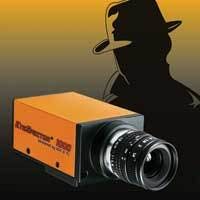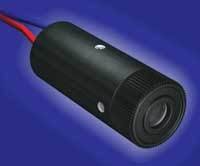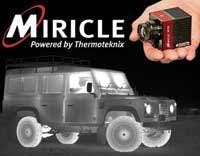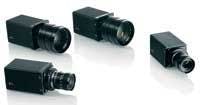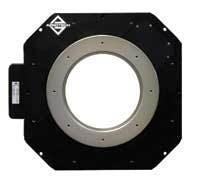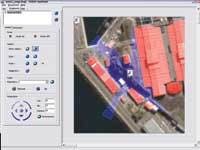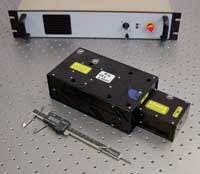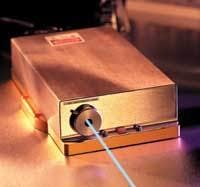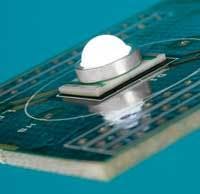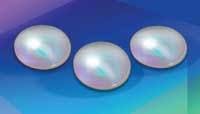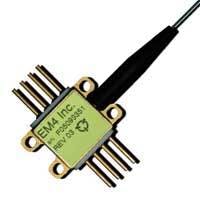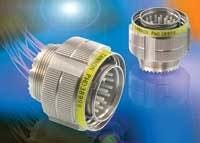Machine-vision solution called EYESPECTOR
SAC GmbH in Karlsruhe, Germany, and Vision Components in Ettlingen, Germany, have jointly developed a compact, user-friendly machine-vision solution called EYESPECTOR 1.4. This series of machine vision consists of hardware from Vision Components and image-processing software based on SAC’s interpreter tool Coake. The units are programmed directly over the network, and operation is through a drag-and-drop approach that enables users to solve demanding image processing tasks without extensive programming knowledge. An integrated PLC facilitates the connection to machines and plants. Four software packages are available for the EYESPECTOR 1.4 series, which can be equipped with black-and-white or color cameras with a maximum resolution and frame rate of 2 megapixels and 200 frames per second. The product range also includes a 2,048-pixel line-scan camera. The units reach a maximum clock rate of 1 GHz (8,000 MIPS). Their standard equipment includes four digital PLC inputs and four outputs and a trigger input which enables jitter-free image recording even at high reading frequencies. The devices withstand vibrations and shocks. Optionally available housings with different IP classes provide additional protection. They also come as stainless-steel models suitable for use in the pharmaceutical and food industries. For more information contact Vision Components online at www.vision-components.com.
Sapphire waveplates change beam polarization state
Custom manufactured sapphire waveplates that are a durable and chemically resistant replacement for single-crystal quartz or mica in the visible and near-IR are available from Meller Optics Inc. of Providence, R.I. Meller sapphire low-order waveplates come in 1/2- and 1/4-wave configurations for changing the polarization state of a laser beam that transmits from 2.8 to 4.7 microns. Featuring Moh 9 hardness and chemical resistance, they are effective replacements for single-crystal quartz or mica waveplates in the visible and near IR wavelengths. Available in 10- to 25.4-millimeter-diameter sizes with AR-V coat at the desired wavelength, Meller Sapphire low-order waveplates have a 60-40 scratch-dig surface finish. Tolerances are better than 300 at 0.632 microns, more than 400 at 1.06 microns, and more than 1000 at 2.94 microns. For more information contact Meller Optics online at www.melleroptics.com.
IR laser-diode module with high pointing stability
RPMC Lasers Inc. in O’Fallon, Mo., is introducing an infrared (IR) laser-diode module for military applications. The laser module has 0.7 milliwatts output power at 840 nanometers, a round spot with beam divergence smaller than 0.7 milliradian, a measured pointing stability smaller than 0.3 milliradian over the temperature range from -35 to 55 degrees Celsius and a low current consumption of 20 milliamps. It provides fine adjustment of windage and leverage. The module is military qualified for shock as strong as 500 Gs and comes in a small housing of 13 millimeters in diameter and 25 millimeters long. The laser-diode module is for applications such as laser target designators for guns and rifles, and for pointers for night-vision goggles. For more information contact RPMC Lasers online at www.rpmclasers.com.
MIRICLE miniature ruggedized thermal-imaging cameras
Thermoteknix Systems Ltd. in Waterbeach, England, is offering MIRICLE thermal-imaging cameras for the OEM builder with high-performance thermal imaging in compact, lightweight, low power, rugged, modular designs. MIRICLE cameras feature embedded software, a choice of analog and digital video outputs and are available as 384-by-288-pixel or 640-by-480-pixel detector resolutions in a range of housings, configurations, and options. MIRICLE infrared cameras and cores match flexibility with mechanical and electronic integration on one platform with a choice of optics and configurations to suit integration or application requirements. MIRICLE thermal-imaging systems fit features and power into the smallest and most flexible packages, which are for surveillance, military, unmanned vehicle, and aerospace applications. Several cameras can be gen-locked for simultaneous frame mode and a range of digital interfaces and real-time PC image processing software accessories, including LabView integration and Video over IP, offer boundless solutions. For more information contact Thermoteknix online at www.thermoteknix.com.
Rugged cameras for mission-critical applications
The Adimec RA1000 family of digital megapixel cameras from Adimec Electronic Imaging Inc. in Stoneham, Mass., was created for prime contractors and original equipment manufacturers (OEMs) who require high-performance, high-resolution imaging under harsh environmental conditions. These cameras are available in a rugged COTS format. Unlike existing industrial Megapixel cameras, the Adimec RA1000 family are qualified according to MIL-STD-810 to meet the stringent requirements of vehicle, airborne, and naval imaging systems. Adimec’s cameras are for capturing and digitizing images in long-range and situational-awareness systems. In July of 2006, Adimec’s cameras provided detailed in-flight inspection of the NASA Space Shuttle Discovery to assess any damage. The RA1000 cameras are for military contractors and commercial OEMs who are looking for high-resolution cameras in targeting, observation or high-end surveillance systems when product reliability is critical. The cameras have 1-, 2-, and 4-megapixel resolution; high dynamic range and sensitivity; full image capture control and Camera Link interface; small outline and low power consumption; and qualification according to MIL-STD-810F. For more information contact Adimec online at www.adimec.com.
ALAR series direct-drive, large-aperture, rotary stages
Aerotech Inc. in Pittsburgh is offering the ALAR series of direct-drive rotary stages that provide angular positioning and velocity control with large apertures, load capability, and very high speeds. With the combination of a large aperture and direct-drive motor, the ALAR series offers performance benefits compared to worm-drive large-aperture stages. Users can get large-aperture rotary stages with zero backlash and no gear wear or gear vibration as is commonly seen in worm-drive stages. Another benefit is significantly faster operation than worm drive, so users get fast testing, low-cost manufacturing, and high profits, company officials say. The stage will maintain its performance over time with no need for maintenance because there are no gears to wear out. Features include five different aperture sizes: 100, 150, 200, 250, and 325 millimeters; 45 to 300 rpm continuous rotation speed; continuous or limited travel; axial load capacity of 300 to 1000 pounds; accuracy and repeatability; low wobble and bearing run out; and cog free motor. Applications include single and multiaxis electro-optic sensor testing, missile seeker testing, antenna testing, inertial navigation device testing, photonic component alignment, high-accuracy laser machining, and precision wafer inspection. The ALAR is also applicable to testing in vacuum to 10-6 torr. These rotary stages can also be configured as multiaxis gimbals. For more information contact Aerotech online at www.aerotech.com.
Airborne target-signature analysis
Cedip Infrared Systems in Croissy-Beaubourg, France, is launching a Flytherm airborne target-signature analysis system, together with its subsidiary Polytech AB in Malmköping, Sweden. The system is for warfare and security applications that need to identify and characterize the target signature of threats, viewing distance, or relative angular position. Flytherm is a four-axis gimbal system capable of hosting a variety of high-performance short-wave, medium-wave, and long-wave infrared focal-plane-array sensors with real-time storage capabilities and post-processing image analysis. Measuring 350 millimeters in diameter, the typical weight of Flytherm varies between 20 and 30 kilograms, allowing its use even with slow-speed airplanes or small helicopters. Users can tailor Flytherm for their needs, with a combination of two or three thermal sensors, collimated along with a visible camera for control purposes. Users have a choice of 320-by-256- and 640-by-512-pixel sensor formats. Lenses are available to suit the resolution and field of view requirements of different applications. Flytherm can also host multispectral cameras such as the popular ORION camera and will readily integrate a wide range of third-party instruments. All communication and digital video data are streamed out to the cabin acquisition system and recorded using the comprehensive, yet intuitive, functionality of Cedip’s proprietary SATIR/ALTAIR multi-acquisition signature software. For more information contact Cedip Infrared online at www.cedip-infrared.com.
Centurion diode-pumped pulsed Nd:YAG laser
Big Sky Laser Technologies in Bozeman, Mont., launched the Centurion diode-pumped, Q-switched pulsed Nd:YAG laser. Producing 45 millijoules of power at 1064 nanometers, 100 Hz in 7-nanosecond pulses, the Centurion is a rugged industrial laser for a variety of applications in the factory or in the laboratory. All harmonic wavelengths and eye-safe 1.57 microns are available. The Centurion is ruggedized and sealed against airborne contamination; it is resistant to vibration and temperature extremes. The laser is completely air-cooled and draws only 150 watts of electrical power, making it appropriate for airborne applications such as remote sensing, laser radar, rangefinding, and designation. Heat can be removed via a fan and a heat sink or by attaching the laser to a cold plate. The laser comprises a compact head that contains most of the electronics and a 2U 19-inch rack that contains the prime power supply and microprocessor card. Big Sky Laser offers a variety of interfaces to control the laser, to suit the varied needs of system integrators. For more information contact Big Sky Laser online at www.bigskylaser.com.
High-power blue lasers
Coherent Inc. in Santa Clara, Calif., is extending the power range of its Sapphire all-solid-state, 488-nanometer lasers with the introduction of new products in its low-power (LP) and high-power (HP) platforms. The Sapphire 488 HP now includes a 500-milliwatt option in the same standard package configuration that formerly offered 100 or 200 milliwatt of output. This powerful air-cooled laser head measures 215 by 140 by 51 millimeters and produces a quality output in terms of mode quality. The new 500-milliwatt Sapphire 488 HP is primarily for biomedical applications, such as flow cytometry and fluorescence imaging where the high power translates into increased process throughput and improved signal-to-noise ratio. Compared to argon-ion lasers of this power range, the Sapphire 488 HP offers longer lifetime, smaller size, lower power consumption, and the convenience of air-cooling. The second new laser is a 75-milliwatt Sapphire 488 LP. This laser is offered in a compact 125 × 70 × 34-millimeter form factor as Sapphire lasers in the 10- to 50-milliwatt range. Sapphire 488 LP also has the same very high-quality beam characteristics as the Sapphire 488 HP. For biomedical as well as semiconductor inspection and instrumentation applications, the combination of 75-milliwatt output power, compact package size, low heat dissipation, long lifetime, and high stability make the Sapphire 488 LP an alternative to air-cooled argon lasers. The common package size and electrical interface requirements with the lower-power models can simplify upward migration for systems integrators. For more information contact Coherent online at www.coherent.com.
160-lumen white LED
Cree Inc. in Durham, N.C., is announcing new benchmarks for power light-emitting-diode (LED) brightness and efficacy with the release of the newest white Cree XLamp 7090 power LED. This XLamp LED produces luminous flux of up to 95 lumens or 85 lumens per watt at 350 milliamps, and as much as 160 lumens at 700 milliamps. Typical luminous flux for the new Cree XLamp 7090 LED is 80 lumens at 350 milliamps, yielding 70 lumens per watt. The XLamp LED was designed to enable general lighting applications, such as street lighting, retail high-bay lighting, and parking-garage low-bay lighting, as well as to vastly improve the light quality in consumer applications such as flashlights. LED technology has been sufficiently bright for many general-illumination applications for some time. The new XLamp 7090 LED, however, offers the efficiency and reliability needed to make LEDs cost-effective for more of these applications. The XLamp 7090 LED is the first power LED based on the company’s EZBright1000 LED chip, which provides the industry’s highest efficacy at 350 milliamps. The Cree LED research and development efforts were enabled in part through funding from the Department of Energy’s Building Technologies Program, within the Office of Energy Efficiency and Renewable Energy, and also in part through funding from the Department of Commerce’s National Institute of Standards and Technology’s Advanced Technology Program. For more information contact Cree online at www.cree.com.
Abrasive-resistant, durable wide-acceptance angle bandpass filter
Deposition Sciences Inc. (DSI) in Santa Rosa, Calif., is a selected vendor for a variety of military and aerospace programs for solutions in durable, thin-film optical-coating technology. DSI offers an abrasive-resistant, super-durable wide-acceptance-angle bandpass filter that can be coated onto curved surface lenses for high-accuracy applications. The thin-film coating blocks wavelengths from the 400-nanometer visible region of the spectrum into the 1200-nanometer shortwave infrared with a high transmission at 1064 nanometers. It enables uniform optical performance on the edges of a lens at high angles of incidence. Designed for use across a large cone angle, DSI’s optical-interference filter is engineered for demanding tasks in which the film needs to have a high transmission over the entire surface of a curved lens. DSI’s new wide-acceptance-angle bandpass filter features unparalleled coating consistency over the entire surface area. Developed with the company’s patented MicroDyn reactive sputtering technology, the filter is processed in DSI’s in-house facility using proprietary techniques to attain the necessary coating uniformity with exceptional results. The optical bandpass filter, like all of Deposition Science’s leading thin film coatings, is ideal for many optical-thin-film coating solutions; for example, wherever high-performance optical systems must operate under extreme conditions. For more information contact DSI online at www.depsci.com.
Aspheric lenses for military night vision and aircraft displays
Edmund Optics Inc. in Barrington, N.J., is offering Tech Spec precision aspheric lenses that are designed for integration into complex optical assemblies and subassemblies such as night-vision objectives, aircraft head-up displays (HUDs), missile-guidance systems, and satellite systems. One asphere can replace several spherical elements, allowing for more compact and lightweight systems. Reducing the element count also eliminates losses, allowing more energy to get to the detector and creating more sensitive electro-optical assemblies-a key consideration in low-light applications such as night vision. Aspheres can also be used to design well-corrected, high-numerical-aperture assemblies, creating imaging systems that simultaneously have better resolving power and collect more light. Featuring low f/numbers (0.75-1.5) for optimum light-gathering and focusing performance, these lenses are computer optimized to eliminate spherical and minimize higher-order aberrations. Precision machined on state-of-the art aspheric polishing equipment, the lenses feature a 0.75-micron surface accuracy and low image runout. BBAR coatings to enhance transmission and blackened edges to improve system signal-to-noise are available upon request. For more information contact Edmund Optics online at www.edmundoptics.com.
High-power 915-to-980-nanometer single-emitter pump lasers
EM4 Inc. Defense in Bedford, Mass., is offering high-power single- emitter pump lasers for defense applications. The lasers have 15 watts of output power out of 200-micron fiber. The 15 W laser retains the dimensions and features of the ultra-high-reliability and power TO-258 family of 8-watt output power, 100-micron fiber single emitters. EM4 Defense designs, develops, and manufactures optoelectronic components for defense and homeland-security applications. Commercial-off-the-shelf (COTS) optoelectronic modules, subsystems, and unique optoelectronic design and manufacturing services (ODMS) are available. For more information contact EM4 online at www.em4inc.com.
PHD fiber-optic connector for military applications
ITT Electronic Components in Santa Ana, Calif., is offering a relatively low-cost, high-performance, densely packaged fiber-optic PHD connector for advanced systems. The connector features multifiber compatibility, multimode capability, and multiple interconnect configurations. The PHD optical core connector bodies and structured cable systems have been engineered to support mission-critical applications within data-carrying networks. The PHD terminus system builds off small-form-factor (SFF) technology, using the standard 1.25-millimeter discrete channel ceramic ferrule, which is single-mode and multimode compatible. Two versions of the terminus design are available with footprints equivalent to 22- and 16-gage electrical contacts that are compatible with cable diameters as large as 1.2- and 2.2-millimeter. The reduced physical size is well suited to future optical solutions, which are anticipated to have single-mode optics mixed equally with multimode optics. The PHD terminus retention uses ITT’s patented “Little Caesar” contact retention-clip technology, which allows for single-cavity service and repair. This rear-release clip retention system design has proven capable of surviving the worst possible environments. For more information contact ITT online at www.ittcannon.com.
